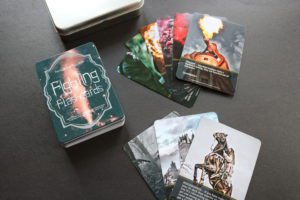Aside from designing games specifically for language learning, I also like to see what kind of games I can adapt for the purpose. Recently, I decided to experiment with how I could use chess for language learning. And this is an idea that may work equally well for checkers or other similar games. Let me explain how I did it and there’s also a video below you can watch if you’d prefer.
What You’ll Need
One thing I like about this idea, is that it is very easy and cheap to do it. Here is what will help you to pull off the idea, though you do not strictly need everything here. There are other ways to do this.
- A dry erase marker (to draw the board on your table)
- A ruler (to help make the lines)
- A pencil (to help write word categories on the shaded spaces)
- A table (preferably light-colored; alternatively a large piece of glass or vinyl chessboard could be used)
- Chess pieces
- Tissue, rag, or paper towels and maybe some water to clean up
How Much Time Required
Time can vary depending on how challenging and how neatly drawn you want your board to be. I whipped mine up in about 15 minutes. If you just eyeball the lines and fill in word categories quickly, it takes mere minutes. If you want to make it look really nice and think through carefully what word categories to put in, it might take 20-30 minutes.
How To Set Up
You can maybe see this better in the video below, but I’ll describe what I did here.
- Using a ruler and dry erase marker, draw a chessboard on your table, shading in the spaces that should be dark. It helps to make the board and spaces bigger than normal. This helps the words you will write later still be visible even when you put the pieces on the board.
- Write a word category onto each space, using your dry erase marker to write in the unshaded spaces and your pencil to gently mark into the shaded spaces. You could write categories like “animals” or “vehicles”, or vocabulary words that need to be translated. But really, it depends on what you want to study and what your level is. This part is highly customizable. If the players are of the same ability level and study similar things, you should put the same word categories on each player’s spaces so that it will be fair. If you put “animals” on a shaded space on one side, you should put “animals” on an unshaded space in generally the same area on the other side. If one player’s language skills are much different or they are studying different things, however, you can make their categories different.
- Put the chess pieces on the board…in the right position! See if you can spot the chess piece I put in the wrong position in the photo…whoops! Old habits die hard.
How To Play
So basically you play just like you would with normal chess with the addition of a couple rules. And again, plenty of room for variations or house rules here.
- Before moving a piece, you need to declare which piece you want to move and where you want to move it.
- Next, you need to speak a word (in your target language) that fits the word category, or translate the vocabulary word that is there, or what have you.
- Then, if the other player accepts what you say, you can move there and your turn is over. But if they think you are speaking incorrectly, they may issue a challenge.
- If a challenge is issued, you must look up the correct translation in a dictionary or consult with a teacher. Whoever loses a challenge must lose a piece. You can play around with how pieces are lost, but here is one simple way: if the person whose turn it is loses the challenge, they should lose the piece they were attempting to move and their turn is over. If the person who issued the challenge loses, they must choose one of their pieces to lose.
In Conclusion…
I hope you enjoy this novel idea to adapt chess for language learning. I’m sure your mind is already taking off with ways to make this better or develop variations. If you have any thoughts along those lines that you would like to share, I warmly welcome you to leave them down below in the comments section. And if you’re interested to see the games for language learning that I have created you can visit the shop to learn more. I also have a blog article about the Advantages Of Physical Games which you are sure to love!


